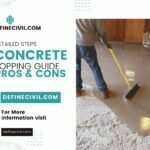Free hand sketching is the most basic element of engineering drawing. As the name suggests, drawings are made with a free hand without any instrument. Therefore, free hand sketching is the simplest and quickest way to transfer one’s ideas on to a piece of paper.
Engineers use this approach at rudimentary stages of a project and before drawing a final technical drawing.
In free hand drawing no measuring equipment is used. It facilitates the conversion of an idea into a 2D or 3D drawing which further helps in having a better understanding on the subject.
This further aids in identifying the shortcomings at the beginning and overcoming them before the making of formal drawings thereby avoiding costly amendments in future.
In this article, we will talk in detail about free hand sketching. Reading this article will help you have a better understanding on the topic and it will also help you in employing this knowledge in your field.
Also Read: Benefits of CAD software for civil engineers

Significance of Free Hand Drawing
As we all know construction projects never run exactly as planned. There is a lot going on; be it the change orders, change of scope, and other related changes. We also are aware of the hierarchical setup on a construction project.
Therefore, with this much uncertainty going on, drawings are sure to change or amend at different stages of a project. As free hand sketching is an effortless and cheap method of drawing, engineers rely on these to accommodate changes.
If resources have been employed to make a drawing, it will be uneconomical to discard old and make new ones. Thus, this method provides an easy way to address the uncertainties by making a free hand drawing first. Later, any changes are catered for and formal drawings are made.
Instruments Used in Free Hand Sketching
Following are the instruments used in free hand drawing:
- Lead pencil
- Sharpener
- Eraser
- Drawing sheet
- Graph sheet
Hence, you can see no complex instrument is used in this drawing which makes it handy for basic level engineering drawing.
Important Guidelines for Free Hand Sketching
There are few rules that you should follow to give your engineering drawing greater expressivity power.
- Gather all the information and be clear on what you are going to draw.
- Firstly, you have to determine what drawing instrument you are going to use. Generally, a wooden pencil of good thickness is preferable.
- The way you hold your drawing instrument plays a significant role in the efficacy of your drawing. You should hold it in such a way that it can move freely and no unnecessary strain is induced in it. It is recommended to hold the pencil with three fingers just like you hold a dart.
- Be clear on what drawing system you are going to use; whether it is parallel line system, orthographic or isotropic.
- Parallel lines are drawn first. To ensure the straightness of your lines your grip on pencil should be light and your upper body should be in a completely free state.
- After parallel lines, vertical lines are drawn. It is advisable to rotate your drawing paper.
- This avoids strain on your hand and assures consistency of lines.
- After these lines, curves are drawn.
- The weight of your line holds great importance. You can go from drawing light to darker to darkest lines. Depending on your work, the weight of the line should be carefully chosen.
Also Read: Modern House Elevation – Design – Types
Basic Principles for Sketching Different Lines
Horizontal Lines
For beginners, drawing a perfectly straight horizontal line turns out be a cumbersome task. However, if you follow certain principles and remain consistent you will master the art. The main principle here is to master your movement.
You must move your hand and forearm in a carefully controlled manner. Another fundamental skill is the way you hold your pencil. Discussing the former, your upper extremity should be relaxed. What usually happens is the lines get a curve like texture rather than being straight.
This happens because your shoulder is too tight and is not allowing free movement. So loosen your shoulder and allow movements to occur without any stress. This way you can get a straight horizontal line.
Talking about the latter, you should hold your drawing instrument just like you hold a dart. Use three fingers and avoid squeezing the pencil. Suitable distance must be maintained between the tip of pencil and your hand. With pencil in hand, the side of your hand should rest on the paper.
Vertical Lines
One way to draw vertical lines is to keep your paper in same position and turn your hand in an anticlockwise manner. However, there are few problems with using this approach. Firstly, you will not get straight vertical lines.
Secondly, you are putting too much strain on your hand which hinders free movement. The best approach is to rotate your paper. This way your wrist is in a neutral position and allows free movement.
Diagonal Lines
To draw diagonal lines, rotate your paper at 45 degrees. This will yield greater accuracy.
Rectangles
To draw rectangles, first draw horizontal parallel lines with required distance between them. After that, rotate your paper at 90 degrees or in L shape and draw vertical lines. This will give you a perfect rectangle.
Circles
The first step to draw a circle is to draw two perpendicular lines intersecting each other just like in a coordinate system. Then mark the intersection of these lines as the center of the circle i.e. the radius. After that, start drawing circle in segments. You should start from second coordinate i.e. draw first segment in the second coordinate. Then keep drawing segments in anticlockwise direction. Finally, you will get your circle.

















